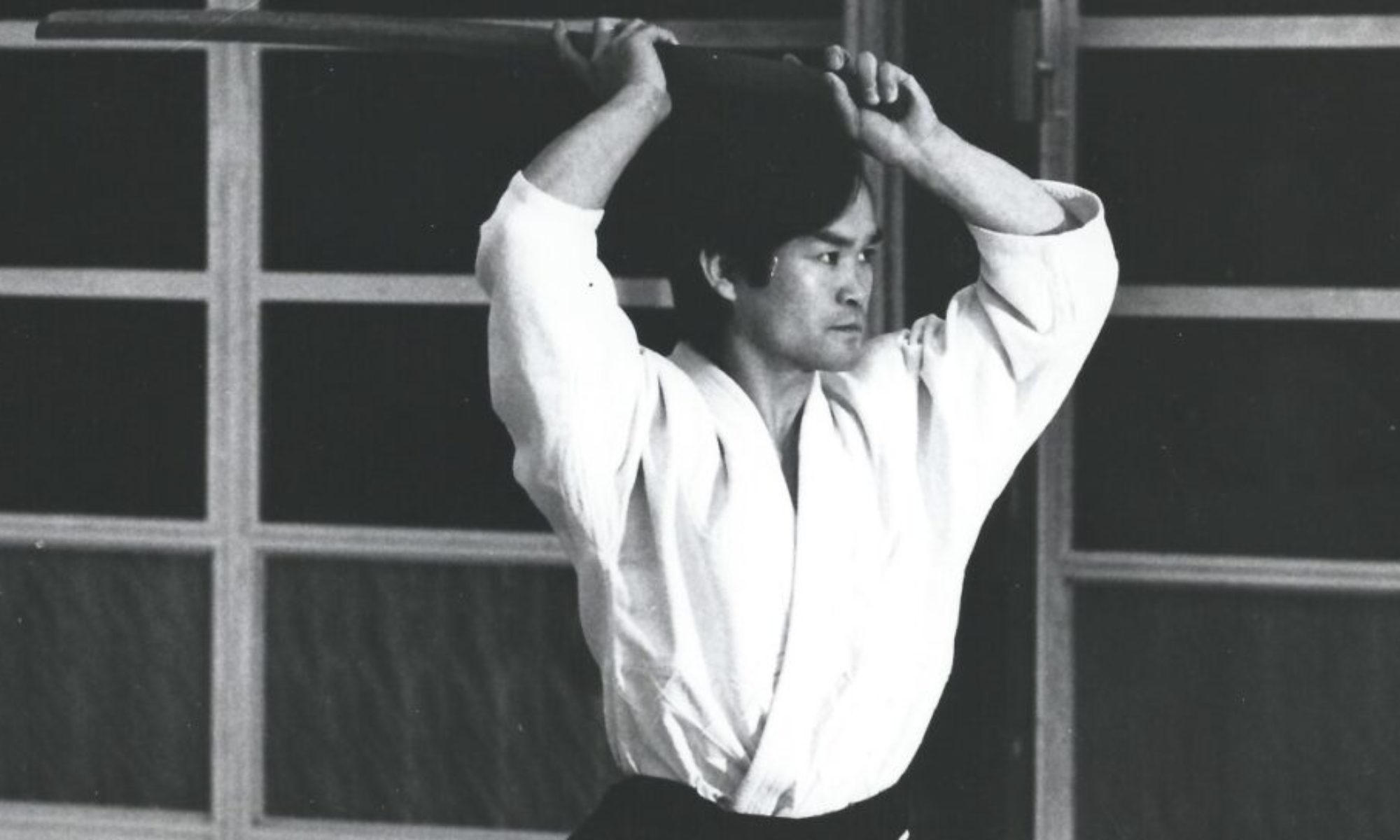Alexander Gheorghiu, student at Ei Mei Kan
Editor’s note: Like delicate flowers peeking through the melting snow, writings on Aikido begin to emerge as more aikidoka return to the mat. My heartfelt thanks to Alex for reflecting (and writing) on why he trains.
When the world couldn’t breathe and isolation-separation became the normal way of life, my teacher, Mooney Sensei, made the rounds to all of his students with one inquiry: ‘Why do you do Aikido?’ This simple, seemingly innocuous, question, he admits, is not really answerable. And yet, it is worth asking. In fact, it is essential to ask it. When put to me, I realized that I had many possible ways of responding, but none of them were really true. It took a while before I thought of a real answer: I do Aikido because of what I have learned doing it. This is what I am summarizing below, an exegesis of my practice.
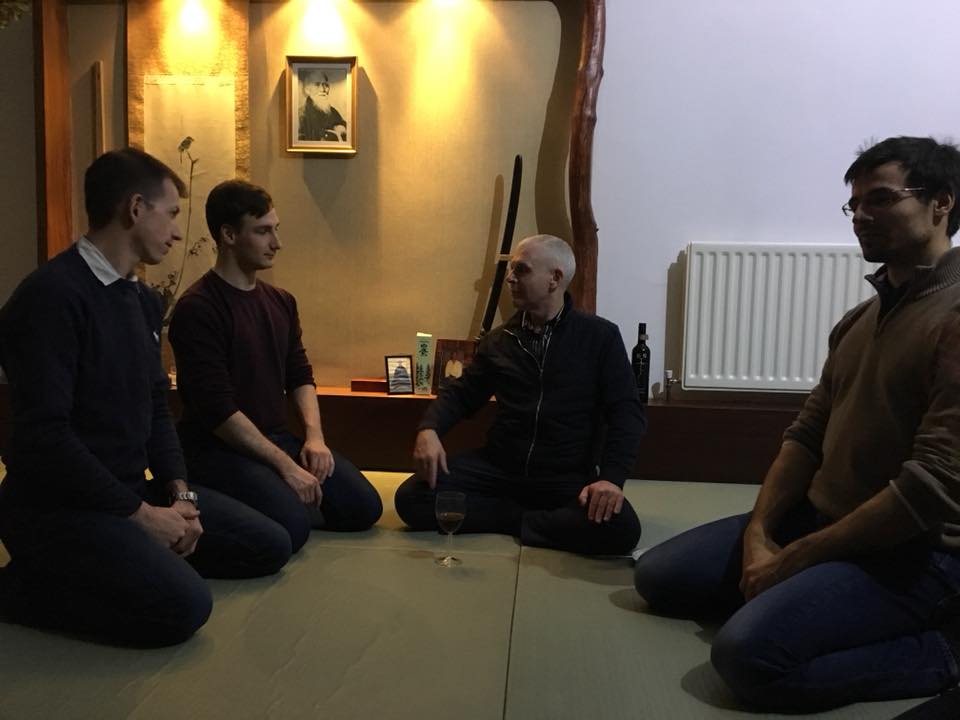
In a 1970 essay, Masahiro Mori, a robotics professor at the Tokyo Institute of Technology, made a curious observation about people’s reactions to robots that looked and acted almost like a human: as a robot becomes more human, our affinity for it increases, but after a certain point our response suddenly turns to strong revulsion, and only after significant further development does our response become positive again. Mori called the sudden onset of nauseous dislike the “uncanny valley”. Though he did well to note it outright, the observation is not a modern phenomenon, the concept of an uncanny valley has, in fact, lingered on the edge of our collective consciousness for some time; Charles Darwin, for example, recorded in The Voyage of the Beagle how the expression on the face of a snake he saw produced in him a certain disgust and loathing, and suggested that this was likely due to it having features somewhat proportional to a human face, prefiguring Mori by over a hundred years. I am concerned with another, non-aesthetic, version of the uncanny valley: personhood.
The rough mise-en-scène for the peak-valley-peak of the uncanny valley I am considering is captured by three riddles:

A human that is not a person is someone baby-like; that is, someone whose world extends precisely to the limits of their mind, someone with no concept of a world around them. I do not mean anything pejorative in this description, it is only a metaphor designed to capture the defining quality of the initial peak — in analogy to Mori’s uncanny valley, they are robots that do not appear to be human at all. This is the starting point from which we will develop an understanding of true personhood.
One descends into the uncanny valley from the initial peak by a typical process sometimes referred to as growing-up, which means extending one’s conscience beyond oneself: we adopt ideologies, doctrines and creeds. This acquired collection of ideas constitutes the individual ‘I’ with whom we identify. And yet, this ‘I’ is really just a character composed of the sum of our history and the collection of our values, and these values are simply judgements — yes-no, good-bad, etc.— about the world, so it is not really us: the character is not the actor. Ironically, the acquisition of personhood is the process by which we forget who we are. (I am reminded of Mary Shelley’s Frankenstein, the genius so carelessly scrapped in the 1931 film adaptation, and sadly ever since, was that the monster was a most erudite and sophisticated thing while being the grotesque stitching together of ‘bits of thieves, bits of murderers.’)
A person tumbling down the valley reaches the bottom when they are fully convinced by the character ‘I’, submitting fully to the associated world-script. It is the abjection of this mode of life that George Orwell so perfectly captures in the hauntingly creepy last line of 1984 (‘He loved Big Brother.’): it is not the destruction of Winston-the-human that is disturbing, but rather the destruction of Winston-the-person. In other words, the trough of the uncanny valley is inhabited by human automata: those who simulate life but do not really live it — yes, Mori, humans can approximate robots too, and the effect is equally dreadful. These individuals are machine-like, emptied-out, void; they have a routine that simply keeps turning, but it is performed without feeling or awareness, sleepwalking without sleeping. What is so dire about this position is that the world-script will always differ from reality, resulting in continual dissatisfaction.
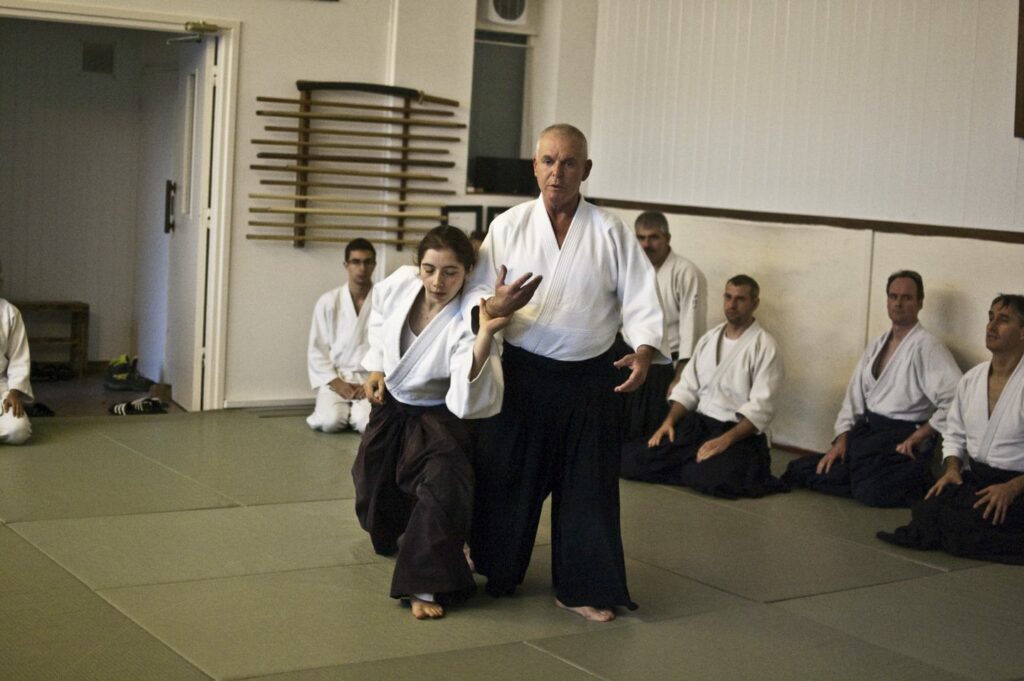
In precise antagony to the trough, the final peak is defined by being entirely free of all rote behaviours and thinking; that is, in contrast to the ghoulish somnambulists of the bottom of the uncanny valley, the population at the zenith of personhood are fully alive, fully awake. They are free from the character ‘I’, rendering them fully real-ized persons — let me put that again, slower: fully realized persons. Not only do they see themselves truly, but they see the world too just as it is. In their freedom, there is a particular similarity between the inhabitants of the initial and final peak, and yet the uncanny valley stands between them — ‘I wish I were a girl again, half savage and hardy, and free’ says Catherine in Emily Bronte’s Wuthering Heights, wishing to be free from the burden of adulthood.
I confess, I am in awe when considering this group of beings. I do not think my wonder is misplaced. Allow me to momentarily trapeze between drama and melo- for rhetorical effect: there is a certain divine quality to these free persons. Recall that when Moses asks God for his name in the book of Exodus, God does not answer with ‘Yaweh’ or ‘Jehova’ or ‘Allah’ or any of the other myriad appellations conferred upon him by mankind, instead he says simply ‘I Am that I Am.’ Therefore, one may think of these fully real-ized persons as an evolved specifies of human, homo deus (pace Yuval Noah Harari). I defer to Lee’s unforgettable analysis of the Cain and Abel story in Steinbeck’s East of Eden, where he explains that ‘this is not theology’. The freedom from this character ‘I’ means that the full persons cannot say ‘I couldn’t help it; the way was set’ because all occurrences of ‘Do thou’ and ‘Thou shalt’ in the world-script are replaced by ‘Thou mayest’. In contradistinction to the human automata — or, for symmetry, homo automaton — who are stuck in a kind of self-fulfilling predestination, the homo deus is free to move in any direction… Apologies, Lee, I interrupted you:

More may be said along the same (melo-)dramatic lines: the free persons possess a kind of preternatural power — I am purposefully avoiding saying that there is something super-natural, for they are, by definition, maximally natural people. Gazing up from the uncanny valley through the hazy mists emanating from the chartered Lethe, it seems that a homo deus lives an impossible life; that is, the effortlessness with which they conduct themselves while achieving tremendous success in their actions seems like a kind of magic — a word I chose without blushing. Their harmony with the world, in some general sense, is their divine quality. A more secular account may use the word grace instead.
So, having descended into the valley, how are we to ascend the other side? How do we become free of the character ‘I’? Here the ancient Greek injunction of ‘Know Thyself!’ is pertinent and has an exhilarating symmetry with the more familiar personal question: ‘Who am I?’ And yet, the Delphic maxim is not very useful since it is, to borrow from the poet William Blake, the mind-forged manacles that are the hardest to shake off. At the same time, the personal question is never satisfactorily answered because the paradigm in which it is asked is one of the character ‘I’ and their world-script. So what are we supposed to do?

To exit the mire of the uncanny valley requires a total capitulation to the way things are, as opposed to how they are perceived or judged or believed to be. One must cast away the discriminating character ‘I’. And this giving up is not trivial, it is not a setting aside of things, it is letting them blow away completely and irrevocably. Using the metaphor of the sleepwalkers in the uncanny valley, this is awakening to reality; put more dramatically, since we live vicariously through the character ‘I’, they must die, and since this ‘I’ is us, this death is our death — ‘You want it darker,’ says Leonard Cohen, ‘We Kill the flame’ — our awakening is our extinguishment. Indeed, in every myth I know, death is ancillary for apotheosis.
So, what would be left if I were to take away your body and your history, your opinions and your power, your name and even your smile? Well, nothing. For me, understanding this ‘nothing’ is difficult. Perhaps the earliest recorded account trying to understand the concept of nothingness is due to Parmenides in the 5th Century BCE and argues that ‘nothing’ cannot exist by the very fact that it is spoken about. The argument seems sound to me, but one of the premises seems dubious, rendering the conclusion dubious: viz. that you can speak of true ‘nothing’. Instead, I think it reasonable to suppose that one cannot even vocalize true nothingness, that the word ‘nothing’ is only a finger pointing at it. Well, then, I cannot really claim to be able to define ‘nothing’ any better than the question above: what is left when one lets go of everything? I may say this though, this ‘nothing’ is not a kind of nihilism. The character ‘I’ and their world-script do indeed constitute a world; in particular, it comprises the world of those things that are real in a relative sense — name, body, etc. — so that the ‘nothing’ I am discussing is the relief to this relativism. Using capitals to emphasize a platonic metaphysics, I may capture this idea with an ironic slogan: form is Nothingness and Nothingness is form.
In short, I claim that a person is a gestalt, by which I mean that the components do not make up the whole. The ‘nothing’ that is left behind when the character ‘I’ is given up is the actor, the true person. I may call it the soul of the person — I simply refuse to blush here too. The impossible art of M.C. Escher captures this notion perfectly: look at any fragment of Ascending and Descending and it makes sense, but look at the painting as a whole and it does not; the whole is more than the sum of the parts, it is imbibed with something none of the components have.
Somewhat unexpected, since this nothingness is all that is demanded to exit the uncanny valley, and since it is we ourselves that hold onto the something (i.e., this character ‘I’), there is actually no barrier to climbing out of the uncanny valley at all! In other words, the demand that we let go of the character ‘I’ is a gateless gate, a concept that is not only Kafkaesque but actually is Kafka, appearing in The Trial as a moral of the sub-story Before the Law. So why should it be so difficult? Paradoxically, letting go of the character ‘I’ and their world-script requires not holding onto something, but it is like having swallowed a red hot iron ball: you try to vomit it but cannot.
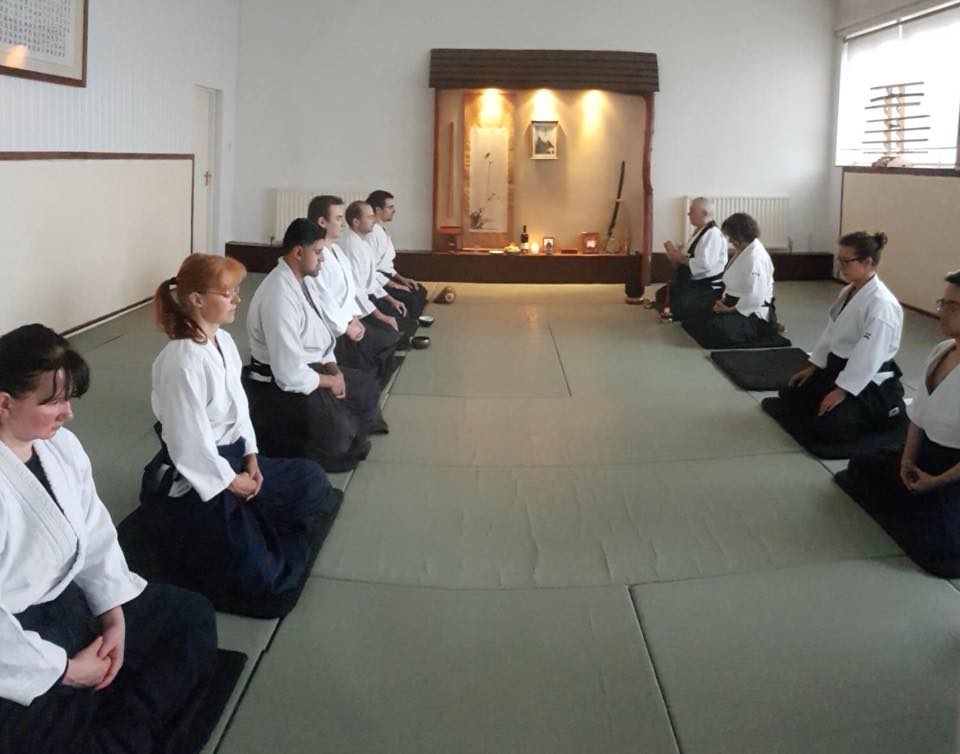
I am detaining us with these philosophical ruminations, we have a long journey to make… We must, at last, begin the ascent from the uncanny valley! What do we require for the journey? I defer to King David: ‘Yea, though I walk through the valley of the shadow of death, I will fear no evil: For thou art with me; thy rod and thy staff they comfort me.’ (Psalm 23:4). We require great faith to cross the vale of personhood — I know, quelle surprise, but I shall do slightly better than mere platitudes — and also great doubt and great determination.
The place of faith is our journey is in recognizing that this character ‘I’ is not the whole truth; that is, that there is something beyond the world-script. Faith is articulated through action, through ritual and tradition and practices (‘…thy rod and thy staff…’). One may call these practices religion, and indeed religion can be a very good way to cross the uncanny valley. More generally, I would propose that this is the defining quality of art; that is, a practice constitutes an art when it is a way to seeing through the character ‘I’. Of course, it is essential that one’s practice is sincere and with focus on the freedom and not the art itself, otherwise the practice simply becomes another routine, another aspect of the character ‘I’ — let’s not forget that the sin of idolatry is the first of the Ten Commandments. It is here that the way in which the rituals of religion are practiced becomes paramount: no one who has witnessed a service done by people of faith could say that it is not artful, but a service done without faith is mere choreography (a bad, bland and boring dance) and, consequently, worthless.
With great faith comes great danger: one may try to carry one’s practice out of the uncanny valley! This is impossible. The one and only condition for ascending the final peak is that one gives up everything, and that means one’s faith must also be let go. As Rushdie puts it in the The Moor’s Last Sigh, ‘To give up one’s own picture of the world and become wholly dependent on someone else’s — was not that as good a description as any of the process of, literally, going out of one’s mind?’ Therefore, faith must be counterbalanced, but with what? Rushdie answers us in The Satanic Verses, ‘Question: What is the opposite of faith? Not disbelief. Too final, certain, closed. Itself is a kind of belief. Doubt.’ Hence, we require great doubt to exit the uncanny valley.
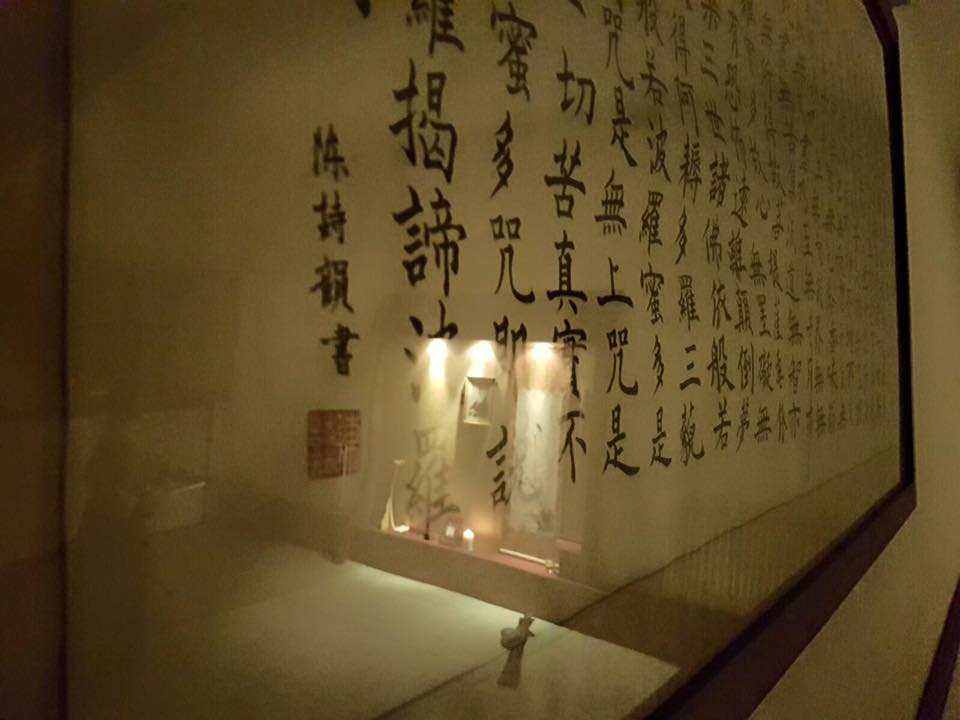
Even with great faith and great doubt, and perhaps because of them, one is likely to encounter great disappointment, great frustration, and great pain. It is too easy to imagine a devout who has spent their whole life reading, studying, learning and memorizing all of the liturgy of their religion and has not managed to see beyond the character ‘I’; or, an artist who has mastered their craft at an incredible technical level but has never produced anything of significance. Perhaps in their final moment at the end of their life there is a single, simple instant in which they break through the gateless gate; and then again, perhaps not. By their practice, these wretches stood a chance at ascending the final peak. Worse, just because one practices a craft with integrity and sincerity does not mean that one will be any good at it. What does one do in this case? Quit? No: too final, certain, closed. As Kipling puts it in If, all one has in the moments of calamitous sorrow when one’s heart and sinew are giving up is the ‘Will which says to them: “Hold on!” ’ Therefore, to exit the uncanny valley and ascend the final peak of personhood, one requires great determination.
That’s all very well, I hear you say, but what has any of this to do with Aikido? In any martial art one is confronted between one’s idea of things and the reality of things; the first may be represented by you going that way, the second by a fist going this way… Bang! Aikido is the martial art that takes as its founding principle harmony, meaning accepting every- and any- thing just as it is without judgement. In practising Aikido one attempts to literally embody the freedom discussed above. Taken beyond the training mat, this freedom is the letting go of ‘I’.

